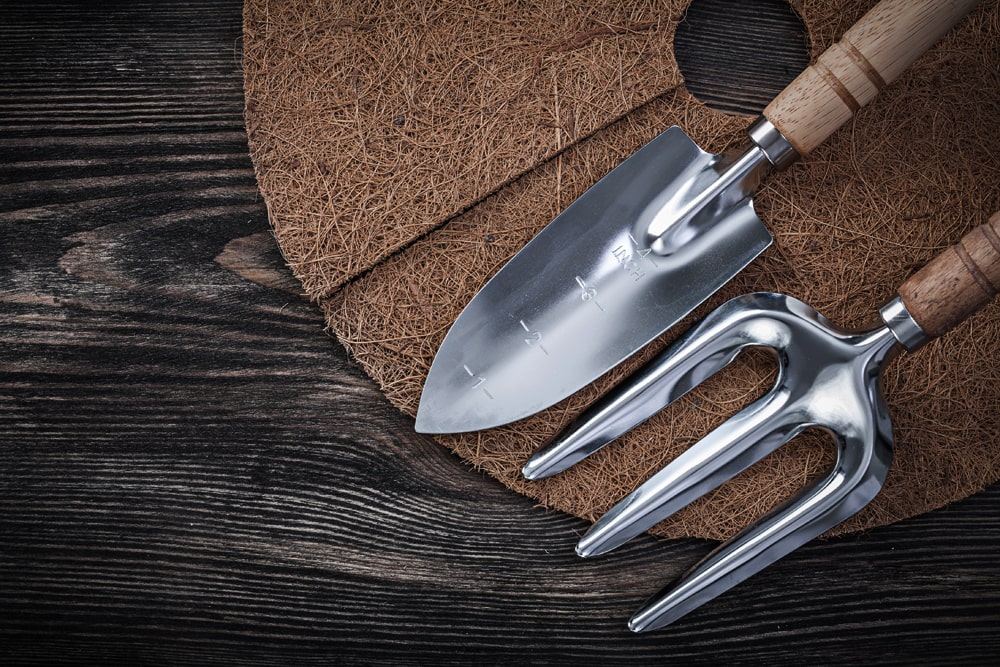
Mulch is an essential component in helping to retain soil moisture, suppress weed growth, prevent soil erosion and more. Many gardeners use mulch to enhance the aesthetics of their garden bed whilst creating an environment where plants can thrive. Using too much mulch can pose problems like excess moisture and waterlogging, both of which can encourage harmful diseases and kill off healthy plants. Too little mulch, however, and it won’t do a great job at combating weed growth.
The question now remains, how thick should you mulch your landscape beds? Is there an ideal recommendation to help maximise the health and fertility of the soil? This article will discuss everything you need to know about mulching your landscape beds from the thickness of the mulch to the type of mulch you should use.

Recommended depth when mulching
In general, the layer of mulch should range from 1-4 inches thick and this may vary depending on the mulching material used. For planting beds, a layer of 3 inches should be enough to retain moisture without suffocating the plants. Mulching materials like wood chips tend to settle on the soil so adding an extra ½ layer is often a good practice to cope with the reduced volume.
Grass clippings meanwhile, are best layered up to 2 inches so that it breaks down easily. This prevents unwanted dampness in landscape beds which tend to cause smelly decay issues. When using materials like straw or hay, use a layer of up to 4 inches deep since these are loose in nature and can compact easily.
Using mulch for additional protection
In areas that experience freezing temperatures, it’s always a good idea to cover plants and bulbs with a layer of protective mulch. This helps safeguard the soil from the rain in places that don’t freeze to avoid losing nutrients. Layering mulch that’s 3 inches deep is usually enough to cover the plants is ideal for seasonal protective mulching. Seasonal straw mulch can be approximately 6 inches deep to provide the most protection. In the spring, remove the protective mulch layer about two weeks before planting.
Cautions when mulching
While deep mulch safeguards the soil, it can potentially damage the stems or trunks of plants. Do not let the mulch touch these parts of the plants as it can cause rotting issues which can ultimately kill plant life. Ideally, the border around the planting bed should be taller than the soil line to accommodate the preferred thickness of mulch. If the mulch extends above the border, it ends up getting wasted by being washed or blown away.
Types of mulch to use
Mulches can be broken down by whether they are organic or inorganic. Organic mulches tend to break down in a season or two and can help enhance the soil quality. Materials like straw, yard clippings, leaf mould, and garden compost all break down in a season or less.
When searching for the gold standard of mulch, go for the one that is going to make the biggest contribution to the soil. The material should be easily composted and should be made from optimal ingredients to help with plant growth.
Straw is reasonably inexpensive and is good for bulb beds, veggie gardens and strawberry plantings due to it being lighter than most mulches. It does have its own downsides though, namely the grain seeds that can germinate and the flammable characteristics that it possesses so do keep that in mind when using straw as mulch.
Bark pieces, cocoa shells, wood chips, and pine needles are longer-lasting organic mulch options. Bark pieces are readily offered and resist both compaction and being blown away by the wind. Bark can be toxic to young plants if it is too fresh or has been stockpiled poorly.
Cocoa shells are preferred for their textured look and sweet odour. They’re a bit pricey, though, and can be difficult to obtain depending on the location you’re in. If ingested, another drawback is that cocoa hulls are toxic to canines.
Inorganic materials such as gravel, volcanic rock, and glass stones usually are thought about as a permanent part of the landscape so they do not have to be replaced like natural materials. However, they do not improve the soil as they are used for aesthetic purposes only.
Unlike wood chips that pull nitrogen from the soil, inorganic products like stones are not taking nutrients away from the plants or harbouring illness. Using landscape fabric is definitely up to you as some gardeners view it similarly to rubber mulch in a sense that they use it to keep stone mulches from moving over time.
There are plenty of benefits to using mulch, but only if you use it correctly. Along with the choice of materials and the application of it, the thickness of the mulch should be considered as well. Not all mulches are created equal and some are better layered thick than others. When layering mulch, make sure to follow these guidelines to ensure your plants are weed-free and are living in a healthy, sustainable environment.
